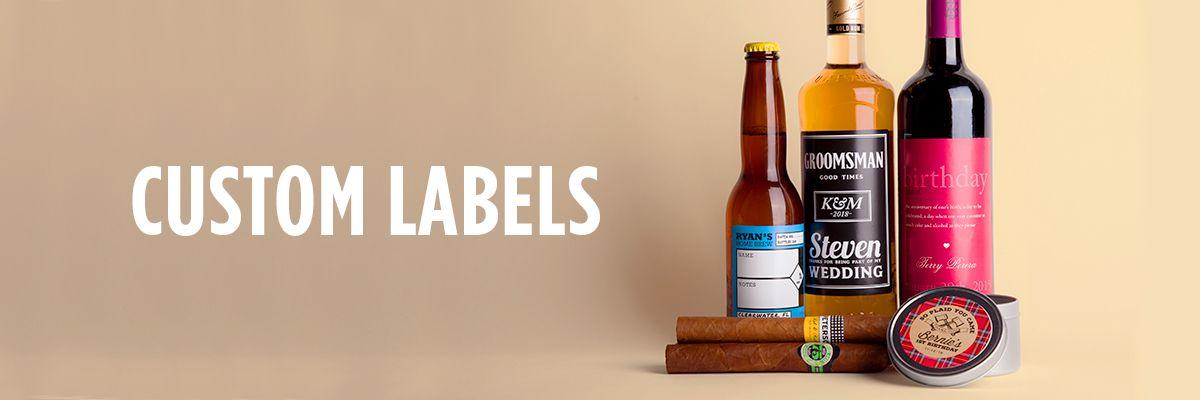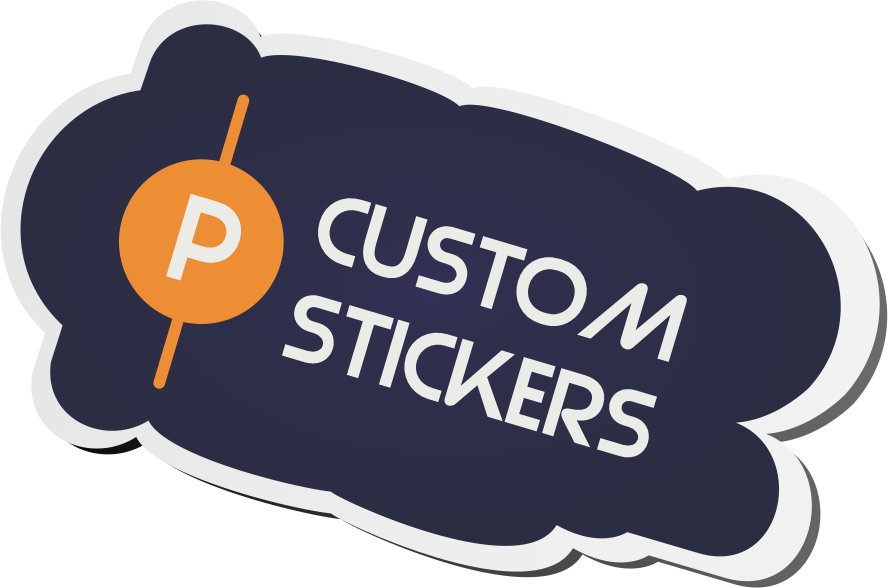“We must learn what clients really want, not what they say they want or what we think they should want.”
Product labels serve dissimilar functions depending on the interested party—e.g., supplier vs. consumer. For product builders and distributors, they enable them to distinguish between different items within a line, convey product information, and market their brand to consumers. However, how a label is designed impacts its effectiveness at performing the above functions.
For this reason, many businesses use custom labels when manufacturing and advertising their products.
Custom labels are a way to guarantee a product—and its essential information—is easily identifiable by consumers.
They also let industry professionals modify the design of the product’s packaging—such as the graphics, textures, and finishes—to suit their brand’s art.
While many businesses use custom labels for their goods, from cosmetics and personal care products like cannabis, ensuring they stand out in the marketplace often necessitates partnering with an experienced and knowledgeable service provider with superior graphic services.
The following article overviews custom labels, covering how to make a custom label stand out, key manufacturing processes, and typical applications.
Your Products, Our Priority!

Key Design Considerations for Custom Labels
No one-size-fits-all format will ensure the products catch a consumer’s eye when designing custom labels for products. However, several design elements make a label more persuasive and appealing in-store and in markets.
Some of the design thoughts to keep in mind are:
1 Material
The first step in designing a custom label is choosing a material. The material designated sets a tone and limitations for all other design fundamentals. For instance, an opaque white material provides considerable design liberty as it can be colored over or left as is for the visuals and texts. In contrast, a transparent material highlights a product’s internal fillings.
2 Color
The choice of theme color can draw attention to a product, growing the likelihood of a consumer picking it up. Moreover, label colors that contrast with those of competing products make it easy for consumers to differentiate a product on a retail shelf or web page.
When choosing a color, it’s essential to consider the overall package. The label’s colors should work with the theme colors of the packaging and the item contents. Otherwise, the product as a whole is perhaps less visually beautiful.
3 Graphics
Similar to color, graphics affect the overall efficiency of a label. Visually attractive graphics attract more consumer attention.
Additionally, if well-designed, they can lessen the amount of text compulsory to convey the necessary product information, resulting in a more streamlined and polished label design.
4 Font
The font chosen for a label is critical. It must draw the attention of consumers without sacrificing readability. When selecting one, you should avoid overly common and decorative fonts. You may also invest in a custom font that fits your brand’s artistic taste.
5 Finish
The finish of a label mostly depends on your company’s taste and the effect you want to achieve. Both glossy and matte finishes offer their advantages; the shiny look adds impact, while the subdued look of matte finish styles for a simpler and more definitive look.
6 Size
The custom size of a product label should correspond with other features of the wholesale product’s packaging, including the custom size and shape of the packaging container.
For instance, for large round boxes, you may use either one wraparound label or individual smaller labels for the front and back sides.
Regardless of which option you select, keeping the branding information in the front is essential as it draws customer attention to your product.
7 Shape
“Greater Quality, Lesser Cost.”
In addition to theme color, graphics, and text font, consumers notice a label’s shape. Unusually and interestingly shaped labels are more identifiable and memorable.
Instead, you can use theme color to mimic the effect of a custom-shaped label by printing the shape on transparent packaging material.
8 Theme
Product lines with numerous variations—e.g., different flavors—should have labels with consistent design themes. While each label should identify the variation, it should be cool for the customer to recognize all differences as belonging to the same line.
9 Contact Information
Labels are multi-functional. In addition to appealing attention from consumers, they serve as a method of putting your brand out there. You should exploit the advertising space provided by wholesale product labels by adding contact information—such as a phone number or website—that allows customers to interact with you if desired.
Processes Use to Create High-Quality Custom Labels
Industry specialists employ a diversity of different processes to make labels. When creating high-quality labels, the most usually used approaches are:
- Flexographic Printing
Flexographic printing is a high-speed printing process that uses an elastic printing plate to transfer ink to numerous substrates, including metallics, pastels, and opaque whites. It offers fast and efficient printing in low to high-volume production runs, including for large swathes of color and on non-porous materials.
- 2. Digital Printing
The digital printing process offers greater precision and accuracy with shorter lead times and lower costs than traditional printing methods.
It does not need conventional printing plates and physical inking, so it comes with much lower packaging material and labor costs.
Additionally, its use of digital design software allows you to make alterations to a label’s design, at little to no additional cost, to meet changing needs. These qualities make the process appropriate for prototyping and small-medium volume runs.
“We At Premium Custom Stickers USA Make Your Products the Best.”
Types Of Custom Business Labels & How to Use Them
Die Cut Labels
You can get die-cut labels custom-made to fit almost any shape or size if you want an odd-shaped label. Traditionally, you had to capitalize in a metal die for printing custom business labels & shaped decals, meaning that printing custom die cut labels were cost-effective only in greater volumes.
Today, there are two additional selections. First, there are now more pre-die cut labels obtainable than ever. This means you can get many shaped labels in small quantities without the cost of a die. If you need circular, rectangular business labels, you can get printed labels on various stocks, with vinyl, clear, and colors in minor quantities.
Secondly, you can often get a laser die-cut label to meet your desires if you have a little custom printing sticker.
Removable Labels
It is cooler than ever to obtain business labels that are “low tack” with only a weak adhesive on them. This means they should be modest to take off when you are done with them. This may be the way to go if you are looking for a label that will only be used for a short time.
Foil, Pastel, And Neon Colored Labels
Special stocks are also obtainable when printing custom labels. You can find glossy foil labels, pastel colors, and lively neon colors. This can be the way to go if you want something to get noticed! Bright theme colors also work perfectly for cautionary labels.
Water And Grease Resistant Labels
Let’s say you have an item to label, but the product contains water or is oily. The printing on a steady label may run or look “stained” after water or oil runs over it.
What do you do? Try a vinyl label for water resistance. The finest practice is to test the label before doing a larger run.
Cling Labels
Get an Artistic Work for your Products!
Modern retailing comprises maximizing your window space to let clients know about your products and services and any sales or distinct promotions you are running.
It is easier than ever to get labels to stick to your windows for custom labels, but they are also changeable when things change. These can be either accurate cling labels that use static electricity to stay affixed or low tack labels with a small amount of adhesive.
While more specialty labels are available in smaller quantities than ever, this means that labels can use in more ways than before. The next four label categories listed below highlight some of the essential uses of custom-printed business labels.
Warning Labels
Warning labels can place on dangerous work equipment or areas with unusual hazards. For example, factory workers sometimes use machines that can cause injury if misused.
A well-placed warning label makes sense so that workers know the risks of using such equipment.
The message on warning labels should be specific to the hazard, the nature of the threat, the consequences, and the way to avoid the hazard.
Additionally, bright colors should be used on this type of label to make sure it stands out to users. Letters should be bold, large, and easy to read. You should include eye-grabbing graphics on the warning label to clarify the hazard for users.
We Make Great Impressions!
Are you ready to flourish your brand with the use of labels? If yes, look no further than Premium Custom Stickers USA!
We are ready to serve our customers with the best custom labels and stickers that no one in the market offers you! So, without waiting for more, contact us now.
Book Your Orders Now, And Don’t Miss a Chance to Be Great!

Leave A Comment